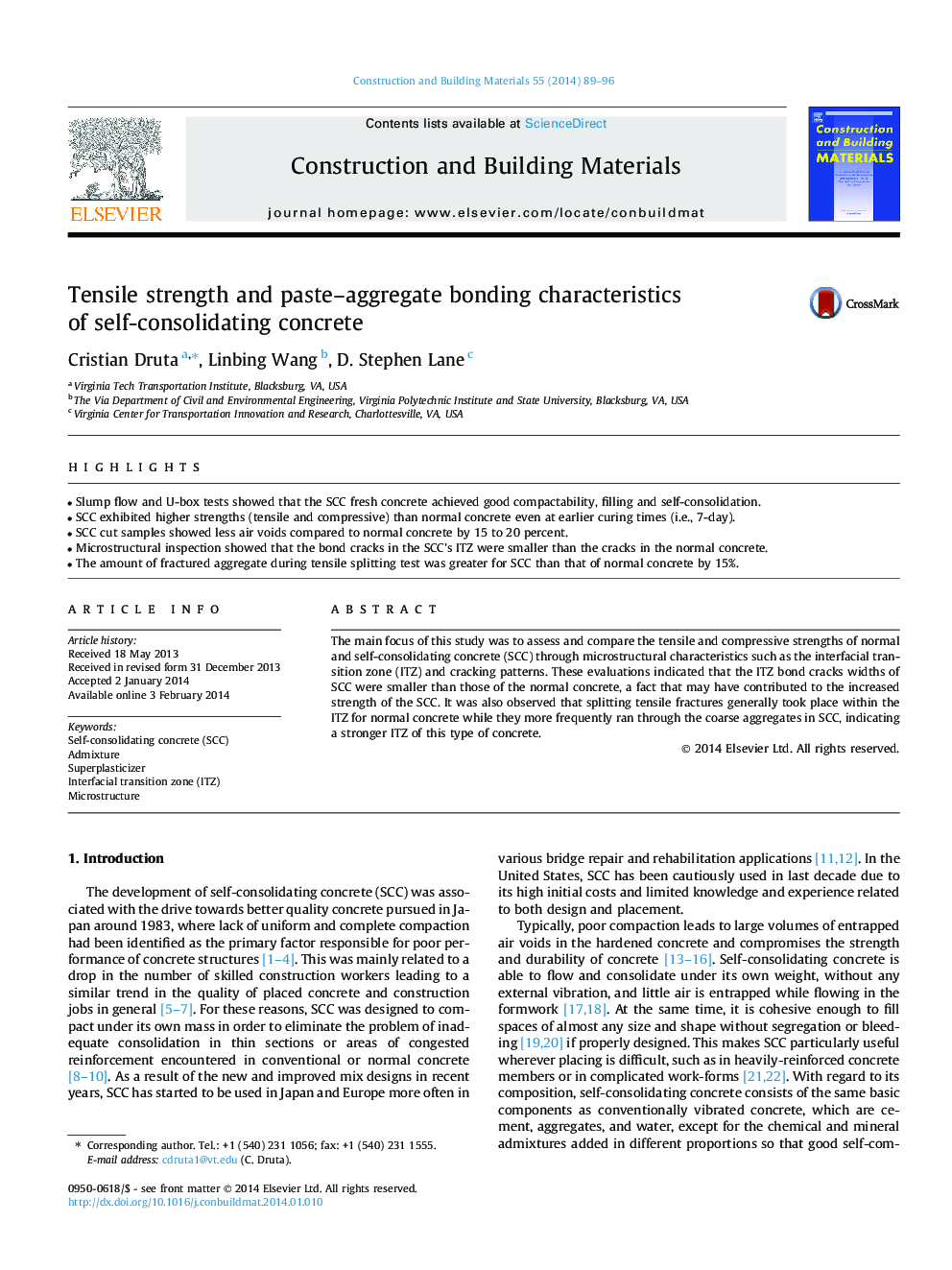| کد مقاله | کد نشریه | سال انتشار | مقاله انگلیسی | نسخه تمام متن |
|---|---|---|---|---|
| 257811 | 503601 | 2014 | 8 صفحه PDF | دانلود رایگان |
• Slump flow and U-box tests showed that the SCC fresh concrete achieved good compactability, filling and self-consolidation.
• SCC exhibited higher strengths (tensile and compressive) than normal concrete even at earlier curing times (i.e., 7-day).
• SCC cut samples showed less air voids compared to normal concrete by 15 to 20 percent.
• Microstructural inspection showed that the bond cracks in the SCC’s ITZ were smaller than the cracks in the normal concrete.
• The amount of fractured aggregate during tensile splitting test was greater for SCC than that of normal concrete by 15%.
The main focus of this study was to assess and compare the tensile and compressive strengths of normal and self-consolidating concrete (SCC) through microstructural characteristics such as the interfacial transition zone (ITZ) and cracking patterns. These evaluations indicated that the ITZ bond cracks widths of SCC were smaller than those of the normal concrete, a fact that may have contributed to the increased strength of the SCC. It was also observed that splitting tensile fractures generally took place within the ITZ for normal concrete while they more frequently ran through the coarse aggregates in SCC, indicating a stronger ITZ of this type of concrete.
Journal: Construction and Building Materials - Volume 55, 31 March 2014, Pages 89–96
